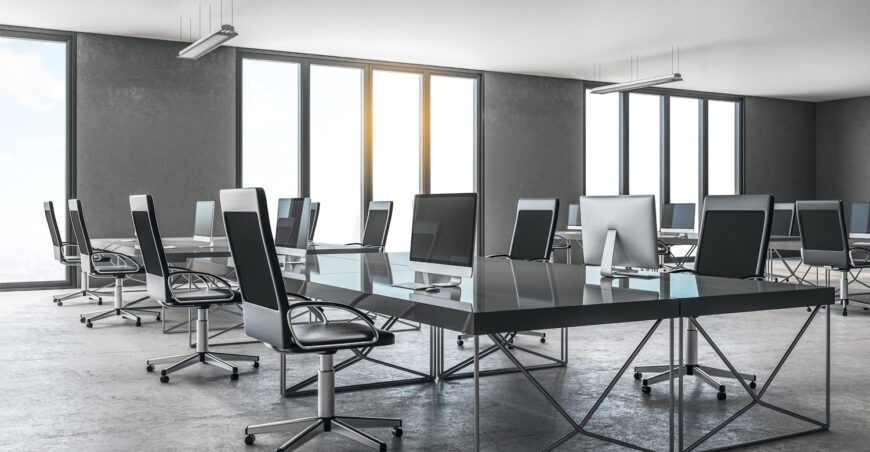Commercial real estate is undergoing one of the biggest shifts in decades, and few property types are feeling it more than the Class B offices. Rising vacancies, work-from-home culture, and tightening capital markets have pushed many older office buildings into a state of uncertainty. But beneath those challenges lies an emerging wave of opportunity, especially for owners, investors, and developers who understand how to reposition these properties for today’s needs.
What was once considered outdated is now becoming a blank canvas. In cities across the country, Class B offices are being reimagined, redesigned, and repurposed into something far more valuable than their original form. And the investors leading the charge are finding that the right upgrades, strategic repositioning, and creative programming can turn “obsolete” into “in-demand.”
Why Class B Offices Are Facing Pressure
Class B office buildings were once the workhorses of the corporate world – functional, affordable, and widely available. But over the past few years, several forces have reshaped the landscape:
1. Shifting Workplace Expectations
Companies want modern, amenity-rich environments that attract top talent. Buildings with outdated lobbies, limited natural light, small floorplates, or lack of technology are falling behind.
2. Competition from Class A Upgrades
Many Class A landlords upgraded aggressively after 2020 with hospitality-style amenities, enhanced HVAC, outdoor spaces, and flexible layouts. As a result, Class B properties without investment are losing tenants to newer, better-equipped options.
Higher interest rates and stricter lending requirements mean owners without strong leasing momentum may struggle to refinance or reinvest in improvements.
4. The Hybrid Work Factor
Not all companies need the same amount of space they did five years ago, and older buildings are often the first spaces to be downsized or vacated. These pressures paint a challenging picture. But for forward-thinking investors and developers, Class B offices offer something unique: affordable acquisition costs and tremendous repositioning potential.
Why Class B Offices Present a Prime Opportunity
While some owners view these properties as a burden, others see them as the perfect value-add play. Here’s why:
1. Lower Basis = Higher Upside
Purchasing a Class B office at a discount provides room to invest in renovations while still achieving a healthy yield. Many Class B assets today trade well below replacement cost, especially in secondary and suburban submarkets.
2. Demand for “Right-Sized” Workspaces
Not every company wants or can afford a “trophy office tower”. Many small and mid-sized businesses prefer:
- Affordable rent
- Convenient locations
- Flexible layouts
- Ample parking
- Shorter lease terms
With strategic renovations, a Class B building can capture this growing segment.
3. Ideal Candidates for Adaptive Reuse
Some Class B buildings are perfectly suited for conversions such as:
- Medical office space
- Behavioral health clinics
- Ambulatory surgery centers
- Coworking or flex space
- Schools and training centers
- Life science suites
- Micro-fulfillment or “last mile” logistics
Medical office conversions are especially strong in high-growth markets like Phoenix, where demand continues to outpace supply.
4. Repositioning Creates New Leasing Momentum
Upgrades in areas like lobby design, lighting, HVAC, common areas, and outdoor enhancements can transform the entire tenant experience. Even modest improvements like modern finishes or updated signage help reposition the property as a fresh, modern alternative.
Strategies for Transforming Class B Offices
Whether you’re repositioning for new office tenants or planning a conversion, here are core strategies driving successful transformations:
1. Reimagine the Tenant Experience
Modern tenants want convenience, comfort, and connectivity. Consider:
- Updated lobbies and entryways
- Strong Wi-Fi and fiber connectivity
- Outdoor seating and green spaces
- Touchless access systems
- Improved lighting and HVAC efficiency
- Wellness rooms or small common meeting spaces
These cost-effective improvements have made a big impact.
2. Evaluate the Building for Medical Conversion
Medical users continue to expand, especially in growth corridors. Key factors include:
- Structural capacity for imaging
- Additional plumbing
- Parking ratios
- Elevator access
- Visibility and signage
Class B buildings with strong location fundamentals often convert exceedingly well.
3. Offer Flexible Leasing Options
Shorter terms, turnkey suites, and spec suites attract tenants who want speed and simplicity. This is especially effective in suburbs and professional service hubs.
4. Focus on Energy Efficiency
Adding energy-efficient systems not only reduces operating expenses but also helps attract corporate tenants who prioritize sustainability.
5. Enhance Curb Appeal
Sometimes the most impactful renovations happen outside. Fresh paint, landscaping, improved lighting, and new signage can breathe life into an older property.
Class B Office Spaces: Not Obsolete – Just Undervalued
While headlines often focus on office distress, the story is far more nuanced. Class B offices aren’t dying – they’re evolving. And the investors who recognize the shift early are unlocking tremendous value.
These buildings offer:
- Lower acquisition costs
- Strong value-add potential
- Conversion possibilities
- High tenant demand in the right markets
- Opportunities for long-term stable cash flow
In a competitive commercial real estate landscape, a well-executed repositioning strategy can turn a stagnant asset into a thriving, income-producing property.
How the ICRE Investment Team Helps
Transforming Class B offices isn’t just about updating finishes or chasing trends. It’s about understanding market needs, identifying the right conversion strategy, and executing with precision.
At the ICRE Investment Team, we specialize in repositioning opportunities and high-growth sectors, especially within the medical and professional office market across Arizona. Whether you’re considering acquiring a Class B office, exploring a conversion, or evaluating a repositioning strategy, our team brings deep market knowledge, development insight, and investor-focused underwriting to every project.
If you’re looking to turn “obsolete” into opportunity, we’re here to help you move with confidence and capture the upside.
















